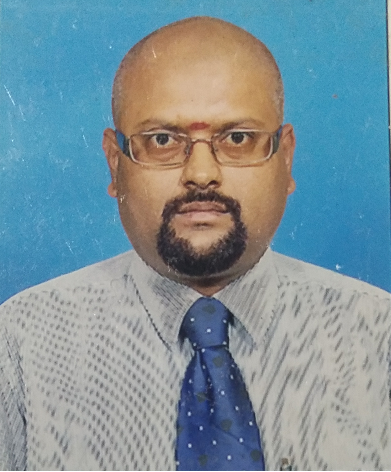This article is intended for the benefit of students who wish to learn more about remote sensing and radar-related topics.
Remote sensing refers to the collection of data about an object or phenomenon from a distance, typically using sensors on aircraft or satellites.
It plays a crucial role in scientific research by providing valuable information about the Earth’s surface and atmosphere. One widely used technique in remote sensing is Synthetic Aperture Radar (SAR), which has its own set of fundamentals and applications.
SAR is a powerful imaging technology that utilizes microwave signals to create high-resolution images of the Earth’s surface, regardless of weather conditions or daylight. Unlike optical remote sensing, SAR is an active form of remote sensing, meaning it emits its own signal and measures the reflected energy.
This ability to penetrate clouds and collect data day and night makes SAR particularly valuable for studying areas where optical sensors might encounter limitations.
The applications of SAR are vast and diverse. SAR data can be used for monitoring changes in land cover, mapping urban development patterns, assessing crop health, and monitoring changes in the Earth’s topography. It is frequently employed in disaster management, agriculture, environmental monitoring, and defense applications.
Understanding the fundamentals and applications of Synthetic Aperture Radar broadens the scope of remote sensing capabilities. Its ability to penetrate clouds and provide high-resolution images makes it a valuable tool for various scientific and practical purposes.
Passive remote sensing techniques are widely used in scientific research fields, including meteorology, agriculture, and environmental monitoring, with applications in studying vegetation health and land surface temperature changes. However, in addition to passive remote sensing, another significant tool in remote sensing is Synthetic Aperture Radar (SAR).
SAR is an active remote sensing technique that uses microwave energy to illuminate the target and record the reflected signals. It offers unique capabilities that complement the passive remote sensing techniques previously mentioned. Fundamentals and Applications of Synthetic Aperture Radar delve into the principles and practicality of SAR.
SAR can operate in all weather conditions, allowing researchers to collect data regardless of cloud cover or darkness. Moreover, it can penetrate through vegetation and thin layers of soil, providing insights into subsurface features and structures. SAR also offers high spatial resolution imagery and is capable of generating 3D elevation maps, making it valuable for various applications like land cover classification, forestry, and urban development monitoring.
While passive remote sensing techniques have played a crucial role in scientific research, understanding the fundamentals and applications of Synthetic Aperture Radar can further enhance remote sensing capabilities and broaden the scope of scientific investigations.
Passive remote sensing techniques involve the detection and measurement of natural energy that is emitted or reflected by the Earth’s surface. These techniques include using sensors to capture images in various wavelengths of the electromagnetic spectrum, such as visible light, infrared, and thermal radiation. These images provide valuable information about the Earth’s surface features, vegetation health, atmospheric conditions, and even human activities.
When it comes to the fundamentals and applications of Synthetic Aperture Radar (SAR), passive remote sensing takes a significant leap forward. SAR is an active remote sensing technique that uses radar signals to penetrate through clouds, vegetation, and even the Earth’s surface itself.

By emitting microwave pulses and measuring the signals reflected back, SAR can create high-resolution images of the Earth’s surface.
The applications of SAR are numerous and diverse. SAR can be used for mapping and monitoring land cover changes over time, helping to analyze urban expansion or deforestation patterns.
SAR is also valuable for studying natural disasters like earthquakes and floods, as it can provide detailed information on the affected areas. Furthermore, SAR’s ability to accurately measure surface elevation makes it crucial for topographic mapping and monitoring climate change impacts on coastal areas.
Understanding the fundamentals and applications of Synthetic Aperture Radar significantly enhances the capabilities of passive remote sensing techniques, allowing scientists to extract valuable information and insights about the Earth’s surface and its dynamic changes.
Fundamentals and Applications of Synthetic Aperture Radar (SAR) offer an intriguing contrast to the benefits of passive, optical images. While passive, optical images excel in providing high-resolution and detailed information about the Earth’s surface features, SAR technology offers unique advantages.
One distinctive characteristic of SAR is its ability to penetrate cloud cover and capture images even in adverse weather conditions.
This makes it a valuable tool for mapping and monitoring land cover types and changes, especially in areas prone to frequent cloud cover or heavy rainfall. SAR’s ability to measure the backscattered signals from the Earth’s surface provides valuable information on surface roughness, soil moisture, vegetation structure, and even ocean currents.
This cutting-edge technology also allows for the creation of 3D images, enabling researchers to study the topography and elevation of land surfaces.
SAR imagery finds applications in a variety of fields, including agriculture, forestry, urban planning, and disaster management.
Its ability to capture images day and night, regardless of atmospheric interference, makes SAR an indispensable tool for comprehensive Earth observation.
One application of passive, optical images in scientific research is vegetation mapping and monitoring. By analyzing these images, researchers can identify different types of vegetation, assess their health and distribution, and monitor changes over time. This information is crucial for understanding ecosystem dynamics.
In the field of Fundamentals and Applications of Synthetic Aperture Radar (SAR), the exploration of the limitations and uncertainties associated with passive, optical remote sensing data is an important area of investigation.
While passive, optical remote sensing provides valuable information, it has its limitations, such as being susceptible to cloud cover and atmospheric disturbances. Understanding these limitations allows researchers to make more accurate interpretations of the data.
Furthermore, integrating passive, optical remote sensing with other data sources holds promise for more comprehensive analysis and understanding of environmental changes.
Combining SAR data with passive, optical remote sensing data can provide complementary information, resulting in a more robust and accurate assessment of vegetation dynamics, including information on vegetation structure, biomass, and growth patterns.
In conclusion, the fundamentals and applications of synthetic aperture radar in conjunction with passive, optical remote sensing offer exciting opportunities for advancing vegetation mapping and monitoring in scientific research. By addressing the limitations and uncertainties associated with these data sources and exploring their integration, researchers can gain a deeper understanding of ecosystem dynamics and environmental changes.

With a robust business leadership background cutting across diverse sectors like Banking, Insurance, Capital Markets, Manufacturing, Education, and University General Management, he has accumulated an impressive 22 years of experience under his belt. His expertise has been sought in international spheres when his leadership has influenced giants and insights have shaped strategies. Here Is his full bio








